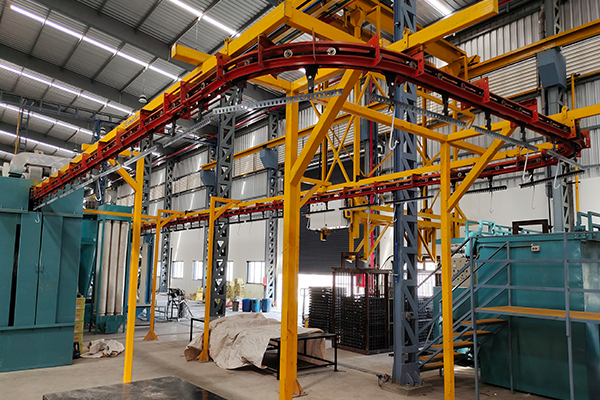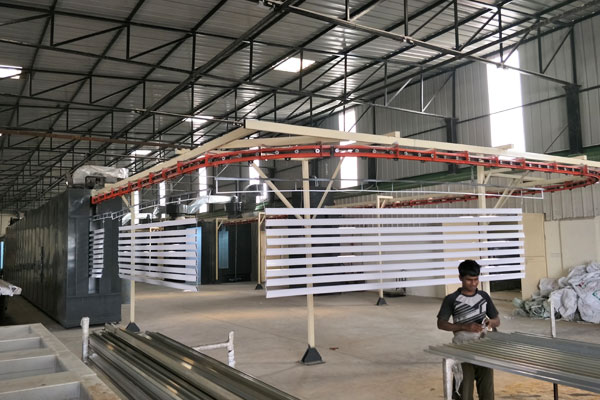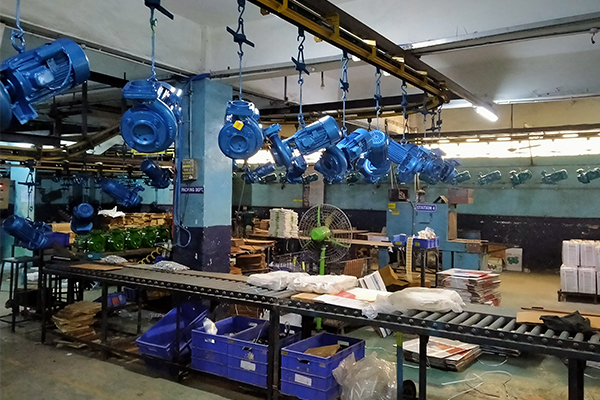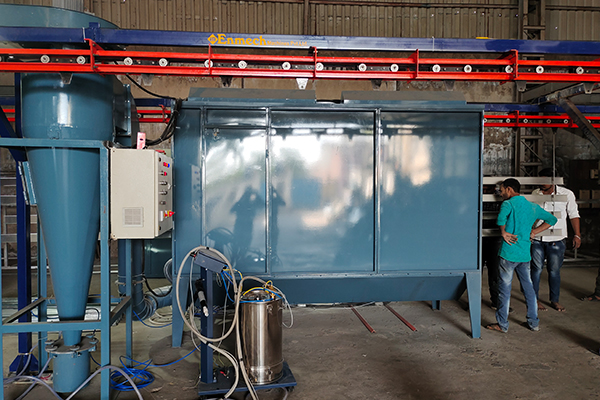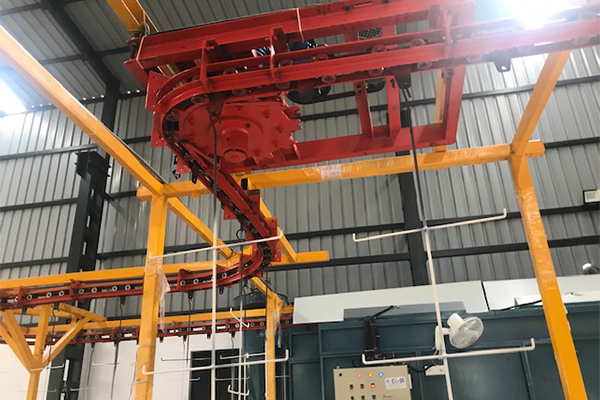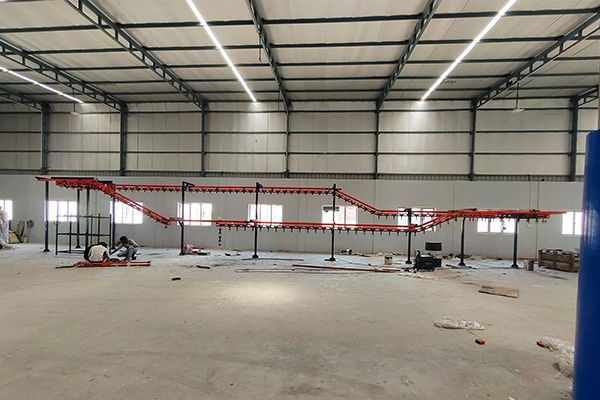A four-wheel overhead conveyor is a type of material handling system that uses a track and trolley system to transport loads along an elevated path. It offers flexibility and control by allowing individual loads to be stopped, diverted, and accumulated independently of the main conveyor line.
- Track System: The track system consists of an overhead track that supports the trolleys and guides their movement. The track is typically made of steel can be configured in various layouts, including straight sections, curves, switches, and inclines.
- Trolleys: The trolleys are the load carriers that run along the track. They are equipped with four wheels, two on each side, which provide stability and maneuverability. The wheels are designed to roll smoothly and quietly along the track.
- Load Handling: it can handle up to 80 kg/hook. Load carriers can be customized to accommodate different load types, such as hooks, hangers, trays, or specialized fixtures. This flexibility makes it suitable for various industries, including automotive, manufacturing, distribution, and warehousing.
- Advantages: Flexibility: Individual loads can be stopped, diverted, and accumulated independently, allowing for more precise control and customization. Space Utilization: The overhead design helps maximize floor space by utilizing the vertical space.Versatility: The system can be designed to accommodate different load sizes, shapes, and weights, making it suitable for a wide range of applications.
Technical Specifications
| Chain : | Standard pitch 9 inch (also available in 6″, 9″,10″, 12″ ) |
| Load pitch : | Multiplies of chain pitch by 2 |
| Load capacity : | 40 kg to 60 kg |
| Radius : | 1000mm, 1200mm, 1500mm, 2000mm |
| Drive : | sprocket type or catterpillar type |
| Take up unit : | Gravity type |
| Speed : | 0 – 5 meter/ min |



